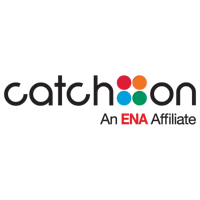For Suzy Brooks, Director of Instructional Technology for Mashpee Public Schools, data analytics is like a secret decoder tool. It reveals the mystery behind which technology is used (or not used) in her district for teaching and learning.
“With the right data, we can make informed decisions about technology and get the most effective tools into the hands of our teachers so it can affect students in their classrooms,” explains Brooks.
As this school year ends, educators are sifting through data to guide next year’s technology initiatives. We talked with Brooks about an analytics tool that helps her understand tech use, make purchasing decisions and save her district money.
EdSurge: What compelled you to adopt a data analytics tool for your district?
Suzy Brooks: We had just wrapped up the third year of our one-to-one Chromebooks initiative when we brought on CatchOn. We didn't have a good handle on what digital resources we had (and were using) at the district level. We didn't know who was in charge of the dashboards at each school or what budgets they were all coming out of. If there was a program at the elementary school, and the high school had the same thing, it wasn't always clear to us.
In a one-to-one district, you need those details, especially when you're trying to make purchasing decisions or asking for program funding.
What changed when you started gathering data about technology use?
Now, we can track what students and teachers are doing on their computers—every website visited and every app used across the district.
We can see that information in one dashboard, for both the tools we pay for and the ones that we don't pay for. We can see how often they're being used, how many unique users are using them. We can track it by building, or look at it as a whole district.
And if it's something we pay for, we can add the price, the number of users or licenses we have for that product and the expiration date. And CatchOn will track our subscription expirations, let us know what's coming up for renewal and break down the cost-per-user, based on how many licenses we pay for and how many people are actually using it.
Then, if we add a new tool to our dashboard, CatchOn reminds us ‘You might want to consider developing some PD for this tool.’ That helps us get the most out of a tool.
All that data helps us see what's trending—what teachers and students are using—and make decisions about what we’ll continue to use, what we’ll drop, what we should consider adding, where we need to offer PD to boost usage.
What’s the direct impact of gathering all this data?
It's helping us make financial and instructional decisions because it’s giving us a much clearer idea of what's happening on our devices.
We’re a small district, only 1700 students, and we’ve only been collecting this data for one school year. But already, this data helped us plan to let go of a few tools at the end of the year and will save us $7,600 next year. That more than covers the cost of CatchOn.
For example, we were using a digital curriculum subscription service that cost $2,600 annually. One hundred and twenty teachers at two of our schools could have used it, but only a very small fraction of that number did. We wouldn’t have known that without this data. And teachers understand we didn't make a rash decision; it’s based on data we've been collecting for the full school year.
And it’s not just about saving money; this data helps us adopt new digital tools. It shows us new tools teachers are using or tools popular among a certain grade level or at a certain school.
For instance, we use a personalized learning site for reading, math, social studies and science content, but in our younger grades (K-2), we discovered that only the math and ELA tools were being used. So, we are taking those extra licenses to the high school where our teachers will begin using them in the fall.
That's powerful, and it's good for our kids.



